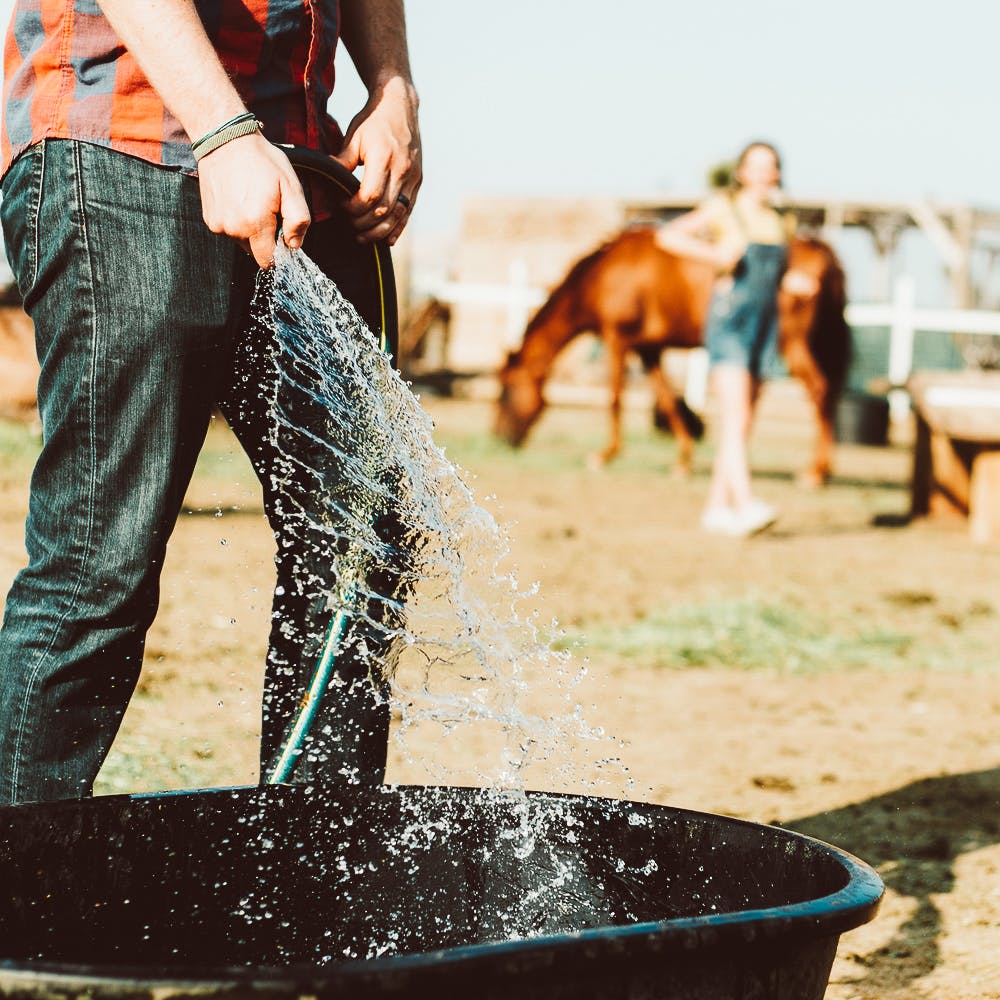We’re very fortunate to live in a place and time that allows us to think so little about water. For nearly all of time, mankind has had a driving daily need to think about where, when, and how they were going to get their drinking water. But today, it’s just a matter of turning on the tap!
However, depending on where you live, there might be quite a few things going on behind the scenes that allow for clean, fresh water to be brought through your pipes. This is especially true if you currently live on – or are considering living on – any sizeable acreage. That’s because nearly all homes in rural settings need to create a self- sustaining source of water on their own (i.e. they’re too far out to be hooked into the local city or town’s water supply).
So, how do country homes get plentiful freshwater flowing through their pipes? The same way our ancestors did…through a well!
Like many parts of acreage living, wells may cause you more trepidation than is actually necessary. In fact, modern well systems are incredibly efficient, effective, and easy to maintain. And today we’re going to show you how they work, what maintenance is required, and how to ensure your well complies with British Columbia’s Groundwater Protection Regulations.
What is a Well?
While you may think that your feet are currently planted on dense, solid ground, the earth is actually almost completely covered in underground layers of water called groundwater aquifers. Though not every aquifer contains freshwater, we are fortunate to live in an area that does indeed carry plenty of freshwater underneath the surface.
With a freshwater source underneath your home, you simply need to build a system to access it. This is where a well comes in…
A well is nothing more than a tool that takes water from the aquifer beneath your home and brings it to your water pipes. The process of constructing a well begins with choosing a method to reach this aquifer.
Types of Wells
Modern wells come in a variety of shapes and sizes, and different types are utilized depending on your specific needs. The quantity of water needed, the depth of your groundwater aquifer, and budget all play an important role in choosing the specific well for your needs.
Generally speaking, there are three different types of wells:
Drilled
Using the most sophisticated drilling techniques and equipment, drilled wells can go as deep as 1,000 feet using either a percussion or rotary-style drilling tool. Once drilled. A casing is dropped into the hole and sealed to prevent contamination. Because of the tools involved, this style tends to be the most expensive.
Driven
Driven wells are made by driving a small-diameter pipe directly into the earth’s surface. Similar to pushing a straw into a juice box, this pipe will be driven until it eventually reaches the aquifer. Driven wells can generally be no deeper than 30-50 feet, and are more susceptible to contamination than drilled wells, as they are not sealed.
Dug
Dug wells are the style our ancestors used, where they dug by hand until they reached water, and sealed the hole with brick or stone. While these are still the well of choice in certain parts of the world (mostly due to lack of funds and machinery), hand-dug wells are not common for new well construction in Canada.
So, how do you determine what type of well is best for you? Easy…talk to a professional!
In British Columbia, well drillers MUST be licensed and regulated by the government’s Groundwater Protection Regulations in order to do business. In fact, it’s illegal for the owner of a property to construct a well without using a licensed well contractor. To find a licensed well driller and pump installer in your area, visit British Columbia’s Registry page here: https://apps.nrs.gov.bc.ca/gwells/registries/.
Once you find a contractor and decide on a drilling method, how do you go about getting the water up and into your home?
In our ancestors’ days, once a well was dug, a simple bucket and pulley system was used to bring water up from the aquifer to the surface. Thankfully today’s system is much less manual. Electric pumps are now used to pull water out from the aquifer and up into your home.
Once inside, water is pulled into a pressurized tank, where it remains until you turn on your tap. As water drains from your tank, a pressure gauge falls until it hits its lower threshold (generally 20-40 PSI), upon which the pump is triggered to pull in more water and refill your tank. This process is repeated indefinitely, ensuring your tank is always full of fresh, clean water ready to come straight to your taps.
Much like the method of drilling used, the style of tank and pressure system that’s right for your home will be dependent on a variety of factors, and is best discussed with your local well professional.
Maintaining and Testing Your Well
As well technology has grown in sophistication, the need for maintenance has decreased drastically. In fact, a well-constructed unit should need very little attention over the years. However, that’s not an excuse for completely ignoring your well. In fact, there are a few things that every owner should do to ensure their access to clean, fresh water remains uninterrupted for years to come (and to ensure their well remains compliant with British Columbia’s Groundwater Protection Regulations):
Well Cover Checks
One of the most important things you can do as a well owner is routinely check the well’s cover, as issues with this barrier are the most common cause of other (costlier) well problems.
You want to ensure that, at all times, your cover:
•Is tight and adequately secured
•Is free of cracks or other damage
•Is free of leaves, snow, debris, or other buildup •Is at least 1 ft. above ground level
It’s advisable to perform a quick check as part of your mowing or other regular landscaping routine. Stopping well cover problems at first sight will help you avoid nearly all the major problems that could potentially arise with owning a well.
Keeping Well Area Free of Chemicals
Of course, the quality of your well water is always going to be a concern. Thankfully, the earth acts as a natural purifier, and more often than not the water coming out of your well is going to be pristine.
As a well owner, you need to do your part to keep the water free and clear of contaminants. Under no circumstances should you store or use harmful chemicals near the access point of your well. Things like motor oil, paints, cleaners, and other contaminants should be kept as far away as possible. While a secured and sealed well should do its part to prevent seepage from chemicals spilled onto the cover and nearby ground, it’s not a system you want to test…especially when it comes to something you’ll be consuming!
Routine Water Checks
Speaking of contamination, as a well owner you’ll want to conduct regular water checks to ensure that nothing above or below the surface is tainting your water.
Environmental organizations recommend that you test your well water a minimum of once per year, however many suggest that a seasonal test (4 times per year) is the most effective way to ensure you stay safe year- round. Water tests kits are readily available online or at your local home improvement store, and are generally very simple and easy to use.
Your best bet? Buy 4 kits (or a multi-pack) and set a calendar reminder to go off every 3 months. This way you never have to worry about when and how you’ll test your well water. Just wait for the reminder and spend 5 minutes running a quick test.
Now, if at any point you encounter issues with your well, such as contamination, cover damage, continued low pressure, etc., it’s important that you have a well professional review the problem immediately, so as to not allow further damage.
Conclusion
Though the concept has existed for centuries, modern wells are a technological marvel, allowing you to access fresh, clean water nearly anywhere you’d like to live.
Wells can cause a lot of anxiety in property owners. But as we’ve discussed, they are nothing to be afraid of. By working with a licensed professional, and conducting a little
routine maintenance, your well can continue pumping pristine water uninterrupted for many years to come!



